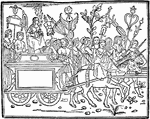Clipart tagged: ‘burial’
!["In order that [Alaric's] body might be saved from the gaze of the vulgar and the rage of his foes, he gave direction that it should be buried in the bed of the river Busentinus."—Ridpath, 1885](https://etc.usf.edu/clipart/78900/78952/78952_alaricburial_mth.gif)
The Burial of Alaric in the Bed of the Busentinus
"In order that [Alaric's] body might be saved from the gaze of the vulgar and the rage of his foes,…

The Body of Ananias is Taken to be Buried
"And Ananias hearing these words fell down and gave up the ghost: and great fear came upon all that…

Catacomb Grave
"Catacombs are caverns, grottoes, and subterraneous caves, destined for the sepulture of the dead. The…
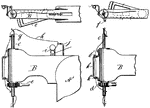
Metallic Coffin
Any box used to bury the dead in is a coffin. Use of the word casket in this sense began as a euphemism…

The Burial of de Soto
Hernando de Soto (Jerez de los Caballeros, Badajoz, Spain, c.1496/1497–May 21, 1542) was a Spanish…

Jesus is Taken Down from the Cross and is Attended by Mary, Joseph of Arimathaea, and Nicodemus
"And after these things Joseph of Arimathaea, being a disciple of Jesus, but secretly for fear of the…
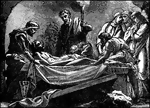
Jesus' Body is Prepared for Burial and Laid in a Sepulchre
"So they took the body of Jesus, and bound it in linen cloths with the spices, as the custom of the…
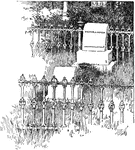
Grave of Thomas J. Jackson
Thomas Jonathan "Stonewall" Jackson (January 21, 1824 – May 10, 1863) was a Confederate general…

Monument of Carlo Marzuppini
This sculpture by the great artist, Donatello, is of Carlo Marzuppini, an Italian chancellor from Florence,…
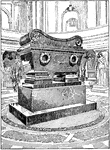
The Tomb of Napoleon
"In 1840 Napoleon's body was removed from St. Helena, taken with great pomp to Paris, and deposited…

Plague Pits at Finsbury
A plague pit is the informal term used to refer to mass graves in which victims of the Black Death were…

Mary Magdalene, Mary the Mother of James, and Salome Find Jesus' Empty Tomb
"And they entered in, and found not the body of the Lord Jesus. 4 And it came to pass, while they were…
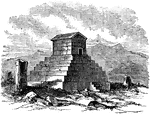
Tomb of Cryus
The Tomb of Cyrus is the burial place of the ancient Cyrus the Great of Persia. Cyrus the Great was…

